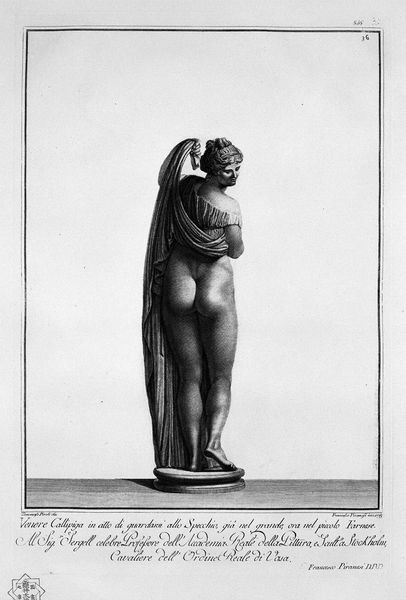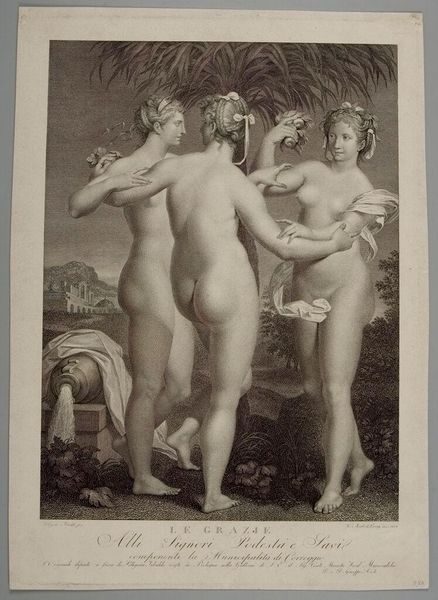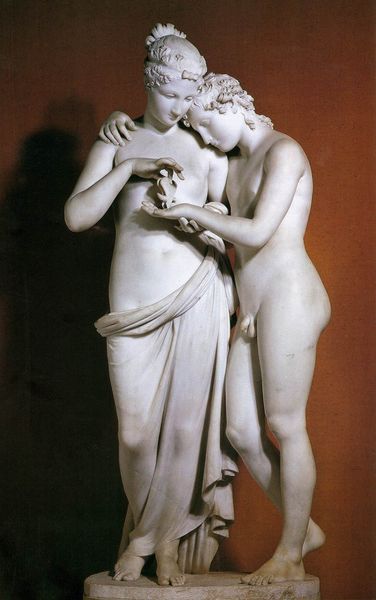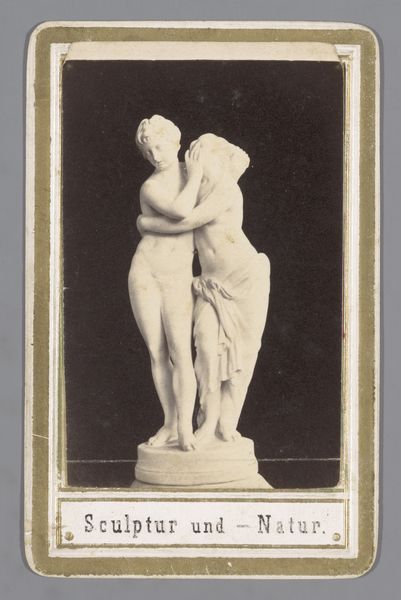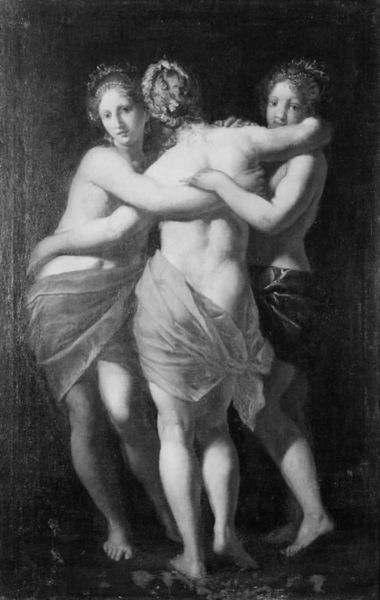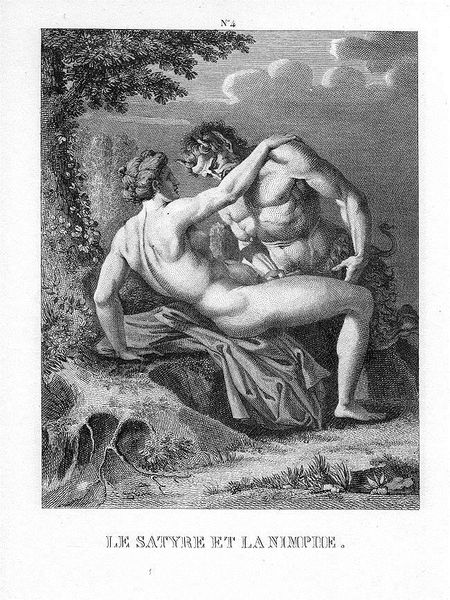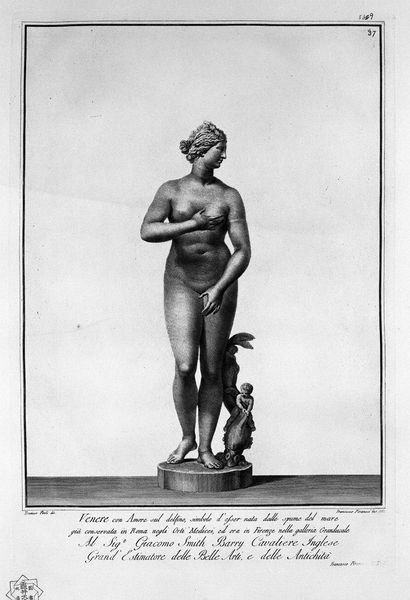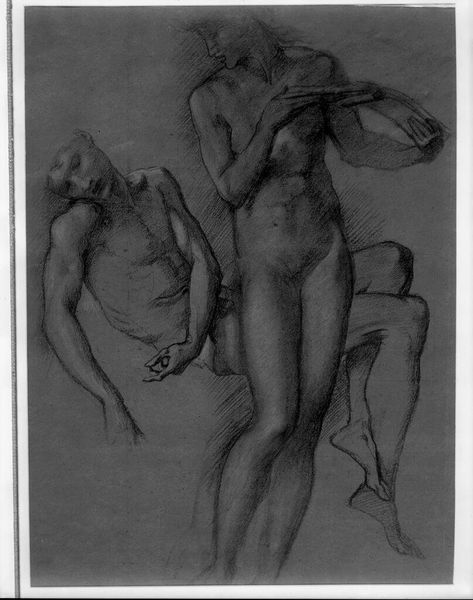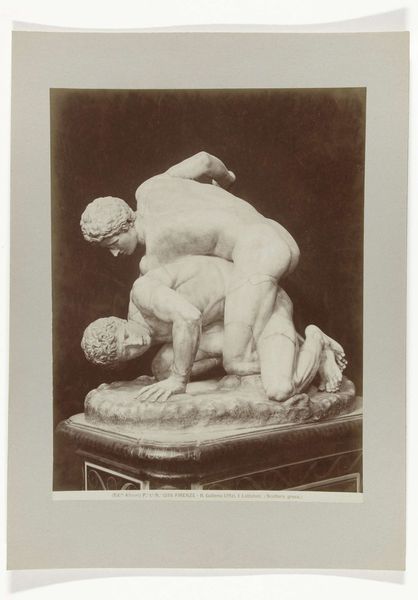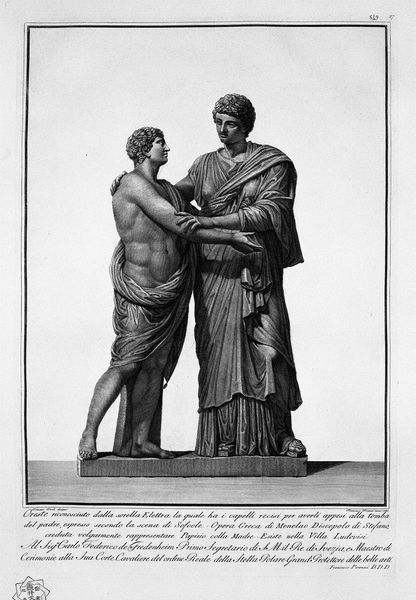
drawing, print, etching
#
drawing
#
statue
#
neoclassicism
#
portrait
# print
#
etching
#
greek-and-roman-art
#
figuration
#
romanesque
#
portrait reference
#
history-painting
#
academic-art
#
nude
Copyright: Public domain
Editor: Here we have Giovanni Battista Piranesi’s etching titled "Cupid and Psyche." The image depicts two figures, presumably the titular characters, locked in an embrace. It strikes me as both intimate and somewhat academic, with the careful rendering of form. What’s your take on this work? Curator: It's fascinating to consider this etching within the context of 18th-century Neoclassicism. Piranesi wasn't simply reproducing a sculpture; he was engaging in a dialogue with the artistic and intellectual ideals of his time. The depiction of Cupid and Psyche was potent with cultural significance during this era of rediscovering classical forms. This etching shows how the imagery fed into broader ideas about beauty, love, and the pursuit of knowledge, themes actively being debated and shaped in the public sphere. Editor: How would its public function as a print inform how audiences would receive this work? Curator: Precisely. Consider that Piranesi wasn’t creating this for a private collection alone. Its existence as an etching, reproduced and disseminated, democratizes access to these classical ideals, no? It puts classical figures and aesthetic values directly into the hands and homes of the literate public. He invites the viewer to participate in a visual conversation about history, beauty, and perhaps even political aspirations linked to the grandeur of the Roman past. It’s strategic in its dissemination. Editor: That makes sense. It’s more than just an image; it’s part of a cultural movement. Curator: Exactly. It reveals how the market for art influenced taste and the visual representation of classical subjects for an expanding public. It wasn't just about art, but about how imagery participated in building a sense of national identity and projecting power. Editor: So much more to this work than meets the eye, thank you for broadening my understanding! Curator: Indeed. The study of art history is the study of its relationship to the world around it!
Comments
No comments
Be the first to comment and join the conversation on the ultimate creative platform.
